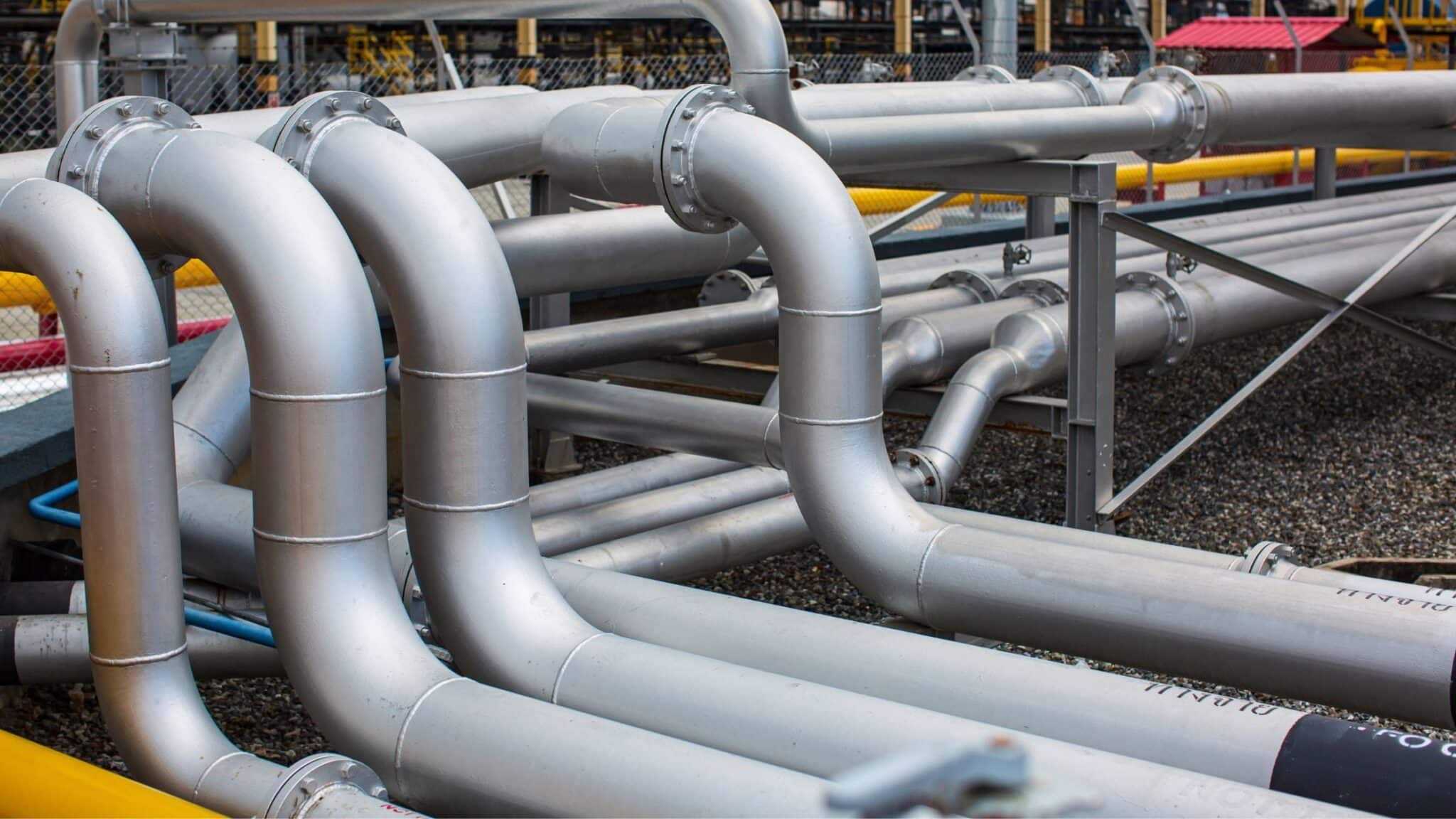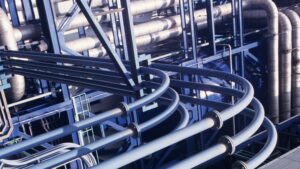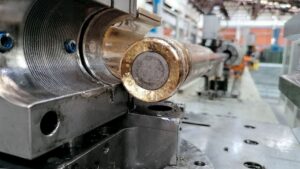Tube and pipe bending is the process of reshaping pipes to a particular angle or direction; and it’s commonly utilized in many industries from the automotive industry to the aerospace industry. The aviation industry takes no chances with pipe bending as it’s of utmost importance to achieve accurate bends.
Let’s take a look at other applications of tube and pipe bending and why they are a necessity.
What are the Applications of Tube and Pipe Bending?
Tube and pipe bending are essential processes in various industries, providing the ability to shape tubes and pipes into specific angles and curves. This versatility allows for the creation of components crucial to the functionality and performance of numerous products and systems.
Automotive Industry
In the automotive industry, tube and pipe bending play a vital role in manufacturing various vehicle components. These components are crucial for the performance, safety, and efficiency of vehicles.
- Exhaust systems: Tube bending is used to create intricate exhaust systems that enhance engine performance and reduce emissions.
- Roll cages: Safety features like roll cages are constructed using bent tubes to provide structural integrity and protect passengers in case of a rollover.
- Chassis components: Bent tubes form the framework of a vehicle’s chassis, ensuring stability and strength.
- Suspension systems: These systems rely on bent tubes to connect various parts, allowing for smooth and controlled rides.
- Fuel lines: Bent tubes are used to transport fuel from the tank to the engine, ensuring safe and efficient fuel delivery.
- Hydraulic lines: These lines are essential for transmitting hydraulic fluid in various vehicle systems, such as brakes and power steering.
- Brake lines: Precision-bent tubes ensure effective braking by accurately delivering brake fluid to the brake calipers.
- Structural frameworks: The structural integrity of vehicles is enhanced through the use of bent tubes in frameworks.
- Racing applications: The automotive industry particularly benefits from tube and pipe bending, as it allows for the creation of lightweight, strong components that can withstand high speeds and stress.
Aerospace Industry
The aerospace industry heavily relies on tube and pipe bending for creating components that must withstand high stress and extreme conditions.
- Hydraulic systems: Tube bending ensures precise hydraulic fluid flow throughout the aircraft.
- Fuel delivery systems: Bent tubes are crucial for transporting fuel efficiently and safely.
- Cooling systems: These systems rely on accurately bent tubes to maintain optimal temperatures.
- Structural supports: Tubes bent to specific angles provide the necessary support for various aircraft parts.
- Airframes: Tube bending helps create the airframe’s structure, ensuring durability and lightness.
- Engine components: Precise bends are essential for the engine’s performance and efficiency.
- Landing gear systems: Bent tubes provide the strength and flexibility needed for landing gear.
- Exhaust systems: Tube bending allows for the creation of efficient exhaust systems that manage the aircraft’s emissions.
- Racing: The aerospace industry often overlaps with high-speed aircraft design, where precise tube and pipe bending is critical for aerodynamic efficiency and structural integrity.
Construction and Architectural Industry
In construction and architecture, tube and pipe bending enable the creation of unique structural designs and essential building components.
- Structural beams: Bent tubes form the backbone of many architectural structures.
- Handrails: Tube bending allows for the creation of aesthetically pleasing and functional handrails.
- Building frames: Bending techniques help create the robust frameworks needed for buildings.
- Decorative elements: Architectural designs often incorporate bent tubes for artistic and functional purposes.
- Plumbing systems: Precision-bent pipes are essential for efficient plumbing in buildings.
Marine Shipbuilding Industry
In the marine shipbuilding industry, tube and pipe bending play a vital role in creating robust and reliable components necessary for the construction and maintenance of ships and submarines.
- Hydraulic systems: Bent tubes ensure efficient fluid flow in hydraulic systems, crucial for various ship operations.
- Fuel lines: Precise bending of tubes is essential for safe and efficient fuel transportation.
- Exhaust systems: Bent pipes are used to direct exhaust gases out of the ship, ensuring proper ventilation.
- Structural supports: Bent tubes provide necessary structural integrity to the ship’s framework.
- Cooling systems: Tubes bent to specific angles help maintain optimal temperatures in critical areas.
- Navigational aids: Bent tubes are used in the construction of navigational equipment, ensuring accurate operation.
- Deck structures: Tubes are bent to create sturdy and safe deck railings and supports.
- Safety railings: Bent pipes form the safety railings, protecting crew members on board.
- Racing: The marine industry often incorporates high-performance boats where tube and pipe bending is crucial for creating lightweight and strong components that can withstand high speeds and rough waters.
Process Industries
Process industries, such as chemical, pharmaceutical, and food processing, rely heavily on tube and pipe bending to create complex and efficient piping systems.
- Chemical processing lines: Bent tubes ensure the safe and efficient transport of chemicals.
- Pharmaceutical manufacturing equipment: Precision-bent tubes are critical for maintaining sterile conditions.
- Food and beverage processing systems: Bent tubes help in the transport and processing of various food products.
- Oil and gas pipelines: Bent pipes are used to transport oil and gas over long distances, ensuring safety and efficiency.
- Water treatment facilities: Bent tubes are essential for creating effective water treatment systems.
- Heat exchangers: Bent tubes maximize heat transfer efficiency in heat exchangers.
- Mixing systems: Precision bending is necessary for creating effective mixing equipment.
- Cooling and heating systems: Bent tubes ensure efficient temperature control in various processing systems.
Manufacturing Industry
The manufacturing industry relies heavily on tube and pipe bending to create components for machinery and equipment. This process is vital for producing parts that are precise, durable, and efficient.
- Conveyor systems: Bent tubes are used to create the frames and pathways for conveyor belts, ensuring smooth and efficient transport of materials.
- Machine frames: Tube bending forms the structural framework for various types of machinery, providing strength and stability.
- Robotics: Precision-bent tubes are essential for creating the joints and arms of industrial robots, allowing for accurate movements.
- Industrial equipment: Many pieces of industrial equipment rely on bent tubes for their structural and functional components.
- Storage systems: Bent tubes are used to create durable and efficient storage racks and shelves.
- Production lines: Tube bending is used to create the frames and support structures for automated production lines.
- Tooling: Bent tubes are essential for creating the jigs and fixtures used in various manufacturing processes.
- Assembly lines: Tubes are bent to form the structures and pathways for assembly line systems.
Healthcare Industry
In the healthcare industry, tube and pipe bending is crucial for producing medical equipment and devices that meet strict performance and safety standards.
- Hospital bed frames: Bent tubes provide the structural support for adjustable hospital beds.
- Mobility aids: Wheelchairs, walkers, and other mobility aids rely on bent tubes for their frames.
- Medical imaging equipment: Bent tubes are used in the construction of MRI and CT scanners, ensuring accurate and safe operation.
- Surgical instruments: Precision-bent tubes are essential for creating various surgical tools and instruments.
- Intravenous stands: Bent tubes form the stable and adjustable stands for IV bags.
- Wheelchairs: The frames of wheelchairs are made using bent tubes for strength and comfort.
- Diagnostic equipment: Bent tubes are used in various diagnostic machines to provide structural support and functionality.
- Support structures: Bent tubes create the frames for various medical support structures, such as examination tables and patient lifts.
- Racing: The healthcare industry benefits from advanced tube and pipe bending techniques to create high-performance medical equipment that can withstand rigorous use and provide reliable support.
Energy Sector
In the energy sector, tube and pipe bending is fundamental for constructing efficient and durable systems. This includes traditional energy sources as well as renewable energy applications.
- Wind turbine structures: Bent tubes are used to form the towers and supports for wind turbines.
- Solar panel frames: Bent pipes and tubes create sturdy frames for solar panels, ensuring proper alignment and stability.
- Oil and gas pipelines: Bent pipes transport oil and gas over long distances, maintaining safety and efficiency.
- Geothermal energy systems: Tubes bent to precise angles are used in geothermal energy extraction systems.
- Hydroelectric power systems: Bent pipes are essential for directing water flow in hydroelectric plants.
- Energy storage systems: Bent tubes are used in various energy storage systems, such as batteries and capacitors.
- Power plant components: Components like boilers and heat exchangers rely on bent tubes for optimal performance.
- Distribution networks: Bent pipes are used in the distribution networks for natural gas and other energy sources.
Trucking
The trucking industry heavily depends on tube and pipe bending for manufacturing various vehicle components. These components contribute to the durability, safety, and performance of trucks.
- Exhaust systems: Tube bending is used to create exhaust systems that manage emissions and improve engine efficiency.
- Frame structures: Bent tubes provide the structural integrity for truck frames.
- Fuel lines: Bent tubes ensure the safe and efficient transport of fuel from the tank to the engine.
- Hydraulic systems: Tubes bent to precise specifications are used in hydraulic systems for brakes and steering.
- Suspension components: Bent tubes form parts of the suspension system, contributing to ride comfort and handling.
- Brake lines: Precision-bent tubes ensure effective braking by accurately delivering brake fluid.
- Cargo frames: Bent tubes create durable frames for carrying heavy loads.
- Safety barriers: Tubes bent to specific angles are used in the construction of safety barriers to protect drivers and cargo.
- Racing: The trucking industry can involve high-performance trucks that require precision-bent tubes to handle rigorous use and ensure safety.
Heavy Industry
In heavy industry, tube and pipe bending is critical for constructing robust and reliable components necessary for various large-scale applications.
- Cranes: Bent tubes form the structural framework of cranes, ensuring stability and strength.
- Mining equipment: Heavy-duty mining machines use bent pipes for hydraulic systems and structural supports.
- Construction machinery: Bent tubes are used in the frames and hydraulic systems of excavators, bulldozers, and other construction equipment.
- Steel mills: Bent pipes are essential for the cooling and heating systems in steel mills.
- Industrial boilers: Bent tubes are used in the construction of boilers to maximize heat transfer and efficiency.
- Pressure vessels: Tube bending is crucial for creating the internal structures of pressure vessels.
- Pipelines: Bent pipes are used in extensive pipeline systems for transporting oil, gas, and other materials.
- Heavy transport vehicles: The structural integrity of heavy transport vehicles relies on precisely bent tubes.
Food Processing Industry
In the food processing industry, tube and pipe bending plays a vital role in creating sanitary and efficient systems for handling various food products.
- Dairy processing equipment: Bent tubes are used in pasteurizers and other dairy processing machines to ensure sanitary conditions.
- Beverage production: Bent pipes form the structural components of bottling and canning lines.
- Conveyor systems: Bent tubes are essential for creating the frames and pathways for food conveyor belts.
- Mixing tanks: Bent pipes are used in the construction of mixing tanks, ensuring thorough mixing of ingredients.
- Heat exchangers: Bent tubes maximize heat transfer efficiency in food processing heat exchangers.
- Food packaging machines: Tube bending is crucial for the frames and mechanisms of packaging machines.
- Sterilization equipment: Bent tubes ensure proper flow and distribution of steam and other sterilizing agents.
- Transport piping: Bent pipes are used to transport liquids and semi-solids in food processing plants.
Petrol Industry
The petrol industry relies heavily on tube and pipe bending to create efficient and safe systems for the extraction, transport, and refining of petroleum products.
- Pipeline systems: Bent pipes transport crude oil and natural gas over long distances.
- Refinery equipment: Bent tubes are essential in the construction of distillation columns and heat exchangers.
- Offshore drilling rigs: Structural supports and conduits use bent tubes for stability and functionality.
- Storage tanks: Bent pipes are used in the network of pipes connecting storage tanks for oil and gas.
- Cooling systems: Bent tubes are critical for cooling systems that maintain safe temperatures in refineries.
- Transport vehicles: Tankers and other transport vehicles use bent tubes for fuel lines and exhaust systems.
- Distribution networks: Bent pipes are part of the extensive network for distributing refined petroleum products.
- Safety systems: Emergency shutdown systems in petrol facilities incorporate bent tubes for quick and efficient operation.
Agricultural
The agricultural industry utilizes tube and pipe bending to create robust and efficient systems for irrigation, machinery, and various farming applications.
- Irrigation systems: Bent pipes form the framework for efficient water distribution systems.
- Machinery frames: Agricultural machinery, such as tractors and harvesters, use bent tubes for their frames.
- Hydraulic systems: Bent tubes are essential for the hydraulic systems that power agricultural equipment.
- Greenhouses: Bent pipes provide the structural support for greenhouse frames.
- Fertilizer distribution: Bent tubes are used in systems that distribute fertilizers evenly across fields.
- Livestock enclosures: Bent pipes create durable and flexible enclosures for livestock.
- Crop storage systems: Bent tubes are used in the construction of storage bins and silos.
- Transport vehicles: Agricultural transport vehicles rely on bent pipes for fuel lines, exhaust systems, and structural components.
Military and Defense
Tube and pipe bending is vital in the military and defense industries, where precision and reliability are crucial. This process is used to manufacture components that meet stringent requirements and perform under extreme conditions.
- Weapon systems: Bent tubes are used in the construction of gun barrels and missile launchers.
- Aircraft frames: Bent pipes are integral to the structural framework of military aircraft.
- Vehicle armor: Tubes are bent to create protective cages and reinforcements for military vehicles.
- Communication systems: Bent pipes are used in the construction of satellite and radio antennas.
- Hydraulic systems: Military equipment relies on bent tubes for efficient hydraulic systems.
- Fuel systems: Bent tubes are used in the fuel lines of various military vehicles and aircraft.
- Cooling systems: Bent pipes are essential for the cooling systems in military equipment.
- Exhaust systems: Military vehicles use bent pipes in their exhaust systems to ensure proper emission control.
Renewable Energy Industry
The renewable energy industry leverages tube and pipe bending to develop efficient and sustainable energy solutions. This process is crucial in the construction and maintenance of various renewable energy systems.
- Wind turbines: Bent tubes form the structural support and internal components of wind turbines.
- Solar panel mounts: Bent pipes are used to create durable and adjustable mounts for solar panels.
- Hydroelectric systems: Bent tubes are essential in the construction of water flow control systems.
- Geothermal energy systems: Bent pipes are used in the piping systems that harness geothermal energy.
- Bioenergy plants: Bent tubes are involved in the construction of bioenergy conversion systems.
- Energy storage systems: Bent pipes are used in battery storage and thermal storage systems.
- Hydrogen production: Bent tubes are critical in the systems that produce and store hydrogen fuel.
- Offshore renewable energy: Bent pipes are used in the construction of offshore wind farms and tidal energy systems.
Where Tube and Pipe Bending is not Suitable?
Tube and pipe bending is a versatile and widely used process in many industries. However, there are certain applications where this technique is not suitable due to specific material properties, design requirements, or functional constraints. Below is a detailed overview of these applications.
-
Extreme Material Thickness
Bending tubes or pipes with extremely thick walls is challenging. The material’s thickness can cause excessive force requirements during the bending process, leading to potential structural failures or defects. Such situations often require alternative forming methods.
-
Brittle Materials
Materials that are inherently brittle, such as certain ceramics or hardened metals, are not suitable for tube and pipe bending. These materials are prone to cracking or shattering under the stresses applied during the bending process.
-
Very Short Lengths
Bending very short lengths of tubes or pipes can be problematic. The machinery and tooling used in bending processes often require a certain length to grip and manipulate the material effectively. Short lengths may not provide adequate leverage or support, leading to inaccurate bends or damage to the material.
-
High Precision Angles
When applications require extremely high precision angles, tube and pipe bending might not be the best choice. Achieving and maintaining tight tolerances can be difficult, especially over complex geometries or multiple bends. In such cases, machining or custom fabrication may be more appropriate.
-
Complex Shapes with Tight Tolerances
Creating complex shapes with tight tolerances can exceed the capabilities of standard tube and pipe bending processes. The cumulative effects of small deviations in each bend can lead to significant inaccuracies in the final shape.
-
Materials Prone to Hardening
Some materials, such as certain steels, can harden as they are bent, leading to increased brittleness and the potential for cracking. This hardening effect can make it difficult to achieve the desired shape without damaging the material.
-
Large Scale Constructions
For large-scale constructions, such as those in the construction industry, bending processes may not be feasible due to the size and weight of the materials involved. In these cases, alternative fabrication techniques, such as welding or segmental assembly, may be more appropriate.
-
Applications Requiring Uniform Cross-Sections
Maintaining a uniform cross-section throughout the bend is crucial for certain applications. However, bending processes can lead to ovality or wall thinning, which may not be acceptable in applications requiring precise internal flow characteristics or structural integrity.
Conclusion
Good as it may be, tube and pipe bending is not for all applications especially extreme material thickness, brittle materials, very short lengths, high precision angles, complex shapes with tight tolerances, and materials prone to hardening. Knowing these limitations means you’ll make more informed choices when starting any project.
However, with the recent development in technology, pipe bending will continue to be relevant in more fields.



